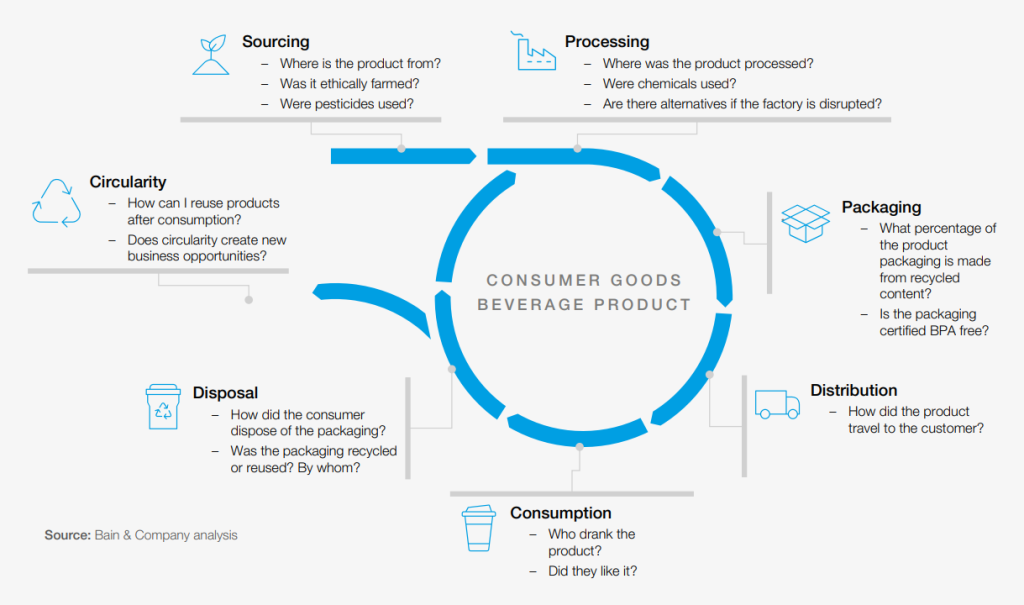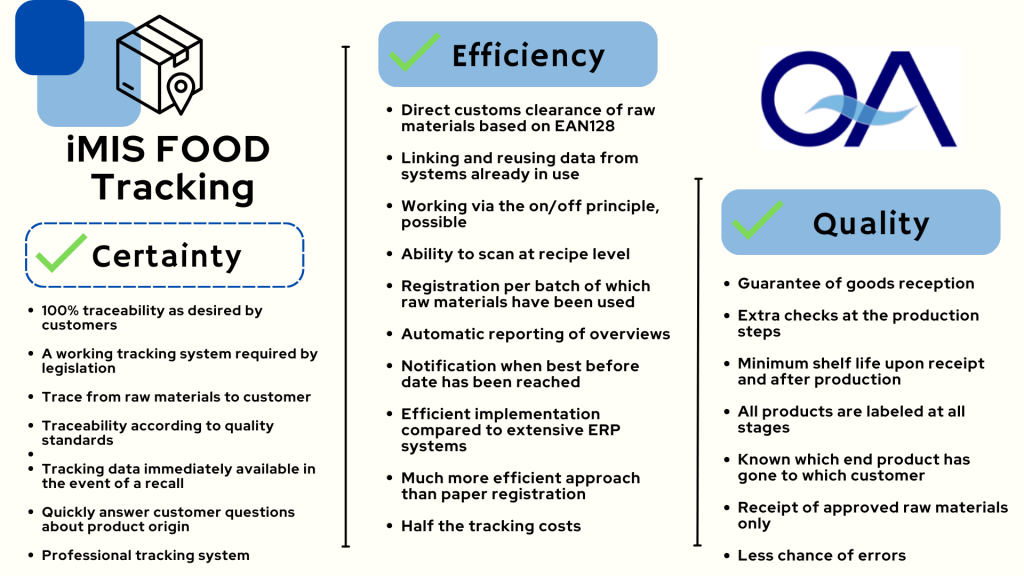Introduction
All stakeholders in the food system require information to make food safety decisions. However, concerning traceability, this statement is even more true, as traceability itself is based on sharing of data knowledge. Furthermore, supporting robust traceability systems has gotten increasingly difficult in an interconnected environment where the chain is growing increasingly complex. As a result, value chains lack precise traceability, potentially resulting in food safety risks. Despite the challenges, the innovative approach of digital technologies seems to be promising in resolving traceability issues in the value chain.
The traceability imperative
-> Traceability can be defined as the ability to identify and trace the history, distribution, location, and application of a product. [1]
-> Traceability is dependent on data and information relating to the product being collected, documented, and communicated across the value chain and amongst the various actors. [2]
-> Value chains very often lack traceability, resulting in decreased food quality and food safety. [1]
What are the benefits of digital traceability?
-> Digital traceability refers to the process of tracing a product via digital technology without the possibility of human error.[2]
According to the EIT, a more digitalized approach to traceability could contribute to the following benefits:
- Simplification of corrective actions
- Quick identification of issues
- Reduction of food safety risks and fraud cases
- Optimization and re-use of materials
- Easier certification (e.g. sustainable, biological)
Digital traceability drivers
Traceability has grown increasingly crucial in recent years due to a variety of issues. Industry laws have become more stringent, yet even in the absence of regulation, customers want social corporate responsibility. [3,4] Traceability is no longer just a prerequisite for safety; it is also a need for transparency. An overview of what traceability can deliver is shown in Fig.1.

Existing digital technologies for traceability
Digital technologies are making it possible to store and process unprecedented amounts of information. [5] A good traceability system regards data as its most valuable asset and requires techniques to process and operate with the data.
Blockchain is a type of distributed ledger technology (DLT) and possibly one of the most innovative tools for traceability. It serves as an open and reliable record of transactions between participants that are not maintained by a central authority. Moreover, blockchain, especially when paired with an AI tool can speed up trade and improve food control systems. [5]
Another innovative tool for traceability is E-certifications. Globally, there is increased interest in e-certification as a means of improving the efficiency of cross-border movement of food and agricultural products while minimizing the potential for fraud. Countries like Australia, New Zealand, and the Netherlands were the first adopters of e-certification, paving the road for international standards. [5]
Table 1 offers an overview of the existing digital technologies that can be employed in traceability. To read more about smart tools for food safety, read this article.

The future of trust in food
The World Economic Forum estimates that 67% of customers want to know the origin of their foods. Furthermore, many food industry catastrophes, such as the European horse meat controversy and the melamine event in China, have contributed to the demand for improved traceability and transparency in the food sector. Consumers want more and more information about the food they buy, such as where it comes from, specifics about its growing environment, inputs, animal welfare, composition, and safety. [4]
- Technology can be utilized to transparently communicate information while eliminating the possibility of interference and tampering, which can increase consumer trust.
- Faster and more transparent traceability of products can contribute to increasing customer trust. [1]
Boosting sustainability through digital traceability
Investors, consumers, and governments are all clamoring for more sustainable products and processes. Digitalization in traceability can improve sustainability in the food chain in several ways. [1,4]
- Reduction of food waste by reducing inefficiency
- Promotion of sustainable sourcing by providing means to track food origin
- Faster e-certification
- Reduction of carbon footprint by optimization of logistics operations [1,4]
To know more about how digital sustainability can aid sustainability, read this article.
Downsides and need for improvement
- Concerns about data protection and confidentiality exist.
- The lack of standard requirements globally can make the attempt to improve traceability through data sharing effortless.
- Investments required to digitalize companies can be high, especially for smaller businesses and low-income countries and this could cause inequality. [5]
- -> Authorities should keep pace with the fast-changing environment and create new protocols and standards.
- -> Public and private investments in digital technologies aimed at improving traceability should be facilitated.
- -> Even low-income countries and small-scale producers should be allowed access to digital technologies. [5]
A successful example of digital traceability in agrifood systems: iMIS Food
Traceability systems for agricultural and livestock systems are critical for production, food safety, and trade. Moreover, it has been proven, that digital technologies have the potential to improve traceability in the industry by allowing an accurate identification of goods and boosting communication flows.
Nonetheless, governments all over the world are raising the bar for value chain transparency as consumers, investors, and other stakeholders demand a greater emphasis on social responsibility. As a result, several governments mandate enterprises to implement a tracing system for tracking products and inputs.
In spite of this traceability management is often absent or ineffective. [2]
How does it work?
iMIS Food includes a tracking management system that can be aligned with existing systems. According to various quality standards and European law, traceability requirements must be met from the raw material to the finished product. The raw material, as well as any additives and packaging materials that come into touch with the product, are all subject to this tracing. This stops the business from beginning the production process with the incorrect goods. Throughout the manufacturing process, iMIS Food records which raw ingredients, additives, and packaging go into which finished goods; whatever consumer has received, and which finished good is tracked by iMIS Food. This enables quick and easy tracking from source material to the client.

Sources
- [1] EIT Food. (n.d.). EIT Food. https://www.eitfood.eu/blog/how-can-digital-traceability-increase-trust-in-the-agrifood-industry
- [2] Food and Agriculture Organization of the United Nations. (2020). The role of digital technologies in livestock traceability and trade.
- [3] Food Traceability – IFT.org. (n.d.). https://www.ift.org/policy-and-advocacy/advocacy-toolkits/food-traceability
- [4] World Economic Forum. (2019). Digital Traceability: A Framework for More Sustainable and Resilient Value Chains.
- [5] World Health Organization. (2019). Digitalization, Food Safety and Trade.
Related articles to Food Traceability: A Digital Revolution
Many customers and visitors to this page 'Food Traceability: A Digital Revolution' also viewed the articles and manuals listed below:
